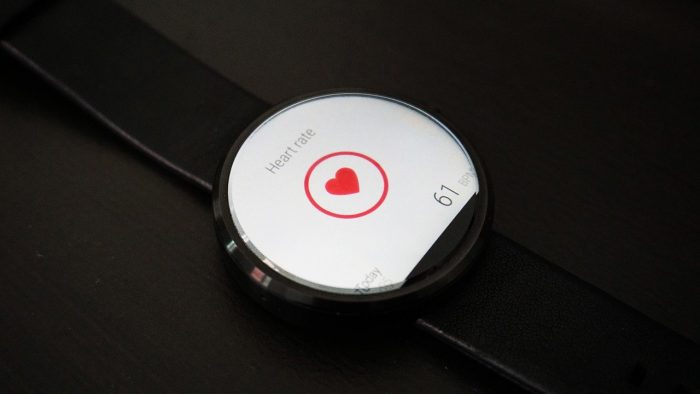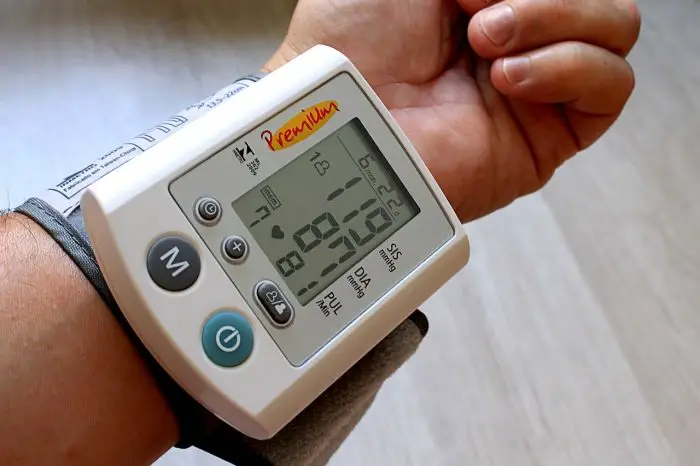Blood pressure is a big component of your health, which is why it is the first thing doctors will check each time you come in for a physical. It is something that most people rarely think about day to day, but is a great indicator of how healthy you are.
So maybe this is of interest if you’re a fitness junkie, or even just curious
Can fitness trackers measure blood pressure? Well, yes and no. There are quite a few fitness trackers on the market today that claim to monitor blood pressure, and in all honesty, most of them have decent reviews for accuracy, though they seem to record a bit high. However, currently there is only one that is officially approved by the FDA for blood pressure monitoring. You can read more about fitness trackers with blood pressure. or carry on here to find out all the information about how they can measure blood pressure.
What Is Blood Pressure?
The term “blood pressure” sounds so much nicer than the measurement of blood pushing against the sides of your blood vessels, but that is essentially what it is. When you measure your blood pressure it is just telling you how much strain your heart is going through to pump the blood throughout your body.
What Is Your Target BP?
There are two parts to your blood pressure: systolic and diastolic. Systolic, the top number when reading blood pressure is always the highest as it is reading the amount the amount of pressure when your heart is pushing the blood. Diastolic is the bottom number and the lower number because it is reading when the heart is between beats.
A normal resting BP reading is about 120/80 or below. Many people won’t have that exact blood pressure, but that is the normal range. Typically, the lower the blood pressure, the healthier you are, but of course there are limitations to that. If you get lightheaded easily or faint, then that is a good indicator that your blood pressure is too low. This can happen if your blood volume is low due to an injury or shock. However, if you have extremely low blood pressure readings and no symptoms, then you may just have an inaccurate reading.

How Do Fitness Trackers Measure BP?
Measuring blood pressure with a fitness tracker is a complicated process, but you can read in depth about it here in our post “How Do Fitness Trackers Measure Blood Pressure?”
Most fitness trackers use PPG or photoplethysmography, which means that your fitness tracker will emit a light source into your wrist and measure the reflected light as it bounces back to gauge the blood volume in your wrist.
The FDA has not technically approved fitness trackers that use this method as an accurate blood pressure monitor, but many users have been surprised by how accurate they find their PPG trackers to be. It does tend to measure a bit higher than normal, so if you have a serious heart condition, you may want to ask your doctor what he or she recommends you use for a blood pressure monitor. Or you could use one of the external blood pressure monitors listed at the end of this post. Using your fitness tracker to monitor your blood pressure regularly while checking it occasionally with a cuff pressure monitor is also a great option.
How Accurate Are Wrist Blood Pressure Monitors?
If it is overly difficult for wrist fitness trackers to be approved by the FDA as a blood pressure monitor, then you can assume that they are difficult to make accurate. According to the Mayo Clinic, the wrist and fingers are challenging spots to get an accurate blood pressure reading because the the wrist arteries are narrower and not as deep under your skin as those of the upper arm” (Mayo Clinic).
They go on to explain that another reason why wrist blood pressure readings are difficult to get is because the fitness tracker should be held at heart level each time to get an accurate reading. It is also difficult to get an active reading since every kind of blood pressure monitoring method, whether by cuff or through PPG, is sensitive to movement.
For these reasons, blood pressure readings at the wrist, especially continuously through PPG monitoring are more than likely at least slightly inaccurate. Though there is groundbreaking new technology being developed all the time. You can read about the new technology being worked on by Tufts Medical School and the National Institute of Standards and Technology at the end of this post here.

Wireless Blood Pressure Monitor Options
Because blood pressure is difficult to measure at the wrist, many fitness trackers haven’t developed this feature to where it is working perfectly. However, all fitness experts recognize the importance of having a low blood pressure and that tracking your blood pressure throughout the day can be helpful to figure out how to get your health where you want it to be.
For this reason, some fitness trackers are equipped with app capabilities to connect to an external blood pressure monitoring device.
You may wonder why you would ever want to have an external device that connects to your phone, tablet, or watch rather than just to have a generic blood pressure monitor. There are a few reasons why connecting to your device is a feature you would want to look for.
- It’s convenient to record the data.
- All your fitness information will be stored in one place.
- You can easily send this information to your physician for reference.
- You can view trends and compare them against activity levels during your day.
Here are some of the blood pressure monitoring devices that are compatible with phones:
MOCACuff
This is FDA approved and the reading is taken at the wrist, which is convenient. This cuff is compatible with both iOS and Android using the MOCACARE app.
QardioArm
Compatible with iOS and Android for use with phones, tablets, and smartwatches through Bluetooth and free app. This is medically accurate and very portable.
Omron Gold Blood Pressure Monitor
This wrist worn monitor is comfortable and easy to use, especially for people who experience discomfort with upper arm readings. This is compatible with iOS, Android, and Alexa enabled devices. It can be used to track blood pressure for two users and connects to devices through Bluetooth. One other helpful feature is position directing; it will tell you when your wrist is in the correct position at heart level. It also is discreet and completely silent when inflating.
OMRON 10 Series Wireless Upper Arm Blood Pressure Monitor
Like the Gold Blood Pressure Monitor, the Omron 10 series is wireless, for up to two users. It will take three consecutive readings and average them to get the most accurate reading possible.
Greater Goods Bluetooth Blood Pressure Monitor Cuff
This is an affordable option for a wireless blood pressure cuff that connects to your smartphone. A portion of all sales goes to charity as well.
Conclusion
Overall, measuring blood pressure is much more complicated than it sounds and putting it in a fitness tracker is a huge challenge to undertake. This will be the next big thing to look for in fitness trackers throughout the next few years, and whatever company figures out the technology to get the most accurate readings will likely have an edge over the market.